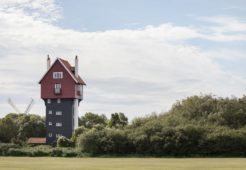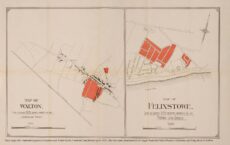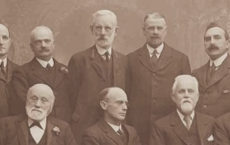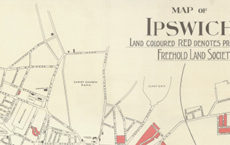Most people will have used, or at least heard of, a building society. But what are they, how do they work and where did they come from?
New beginnings
The early origins of the building society movement can be traced back to Ketley’s Building Society, which was founded in 1775 by one Richard Ketley and was the first organisation of its type in the world. Ketley’s stated purpose was to combine the resources of its members, who would each contribute an amount into a shared fund and draw lots to select who had the opportunity to purchase land and construct a home.
In these early days, building societies were self-terminating, meaning that when all of the members had a house the society would be dissolved. (Interestingly the last terminating building society, the First Salisbury and District Perfect Thrift, was dissolved in 1980.)
A new development came with the rise of permanent building societies, the first of which was the Metropolitan Equitable in 1845. This was the result of a demand for people not wanting to build or buy their own houses, but to have somewhere safe for their savings. It was also only men who owned a plot of land who were entitled to vote in elections, and so building societies acted to enfranchise parts of the general population.
The movement gains momentum
Birmingham was a centre of radicalism in the 1840s and became the home and starting point for the freehold land society movement under the energetic leadership of James Taylor. He travelled hundreds of miles to explain the potential of land societies. Within a matter of months word had spread across the country. Land societies or associations were formed in Coventry, Wolverhampton, Dudley and Stourbridge. The emerging town of Ipswich was to be in the next round.
Ipswich Building Society was founded in October 1849 as the Ipswich & Suffolk Freehold Land Society (FLS), making us the fourth-oldest permanent building society still in existence today after the Scottish (founded 1848), the Saffron (January 1849) and the West Brom (April 1849).
Soon after, the revolution took off as hundreds of building societies popped up all over the country, with even more following the Building Societies Act 1874 which provided the legislative framework for current and future societies. The scale of growth was such that by 1910, there were some 1,723 societies in existence across the UK with more than 626,000 members.
Into the 20th century
In our own back yard, throughout the late 19th and early 20th century the Ipswich & Suffolk FLS was busy laying out new roads and building houses right across Ipswich and the surrounding areas while competing societies did likewise in other parts of the country.
By the outbreak of WW2 in 1939, building societies were on the decline as terminating societies wound themselves up and mergers began to occur between neighbouring societies in order to compete with larger societies. The Ipswich & Suffolk Permanent Benefit Building Society, as it was known at the time, played a key role along with other mutuals in helping the government build vast numbers of new homes after the devastation of the war.
The boom years of the 1960’s and 70’s followed new legislation – the Building Societies Acts 1962 – which granted societies greater powers and established a new regulator, the Building Societies Commission. The number of Suffolk-based societies operating in the post-war period dropped from five to just one, and in 1975 the Ipswich & Suffolk took in the Ipswich & District, resulting in the Ipswich Building Society we recognise today.
Demutualisation
A watershed moment for the sector came with the introduction of the Building Societies Act 1986, which for the first time allowed building societies to ‘demutualise’ and become a fully-fledged bank if more than 75% of their members agreed. Many big high street names then did so, including Abbey National and Halifax. The Nationwide was the largest building society that did not follow the wave of demutualisations, despite attempts in 1998 and 2001 – with their Board of Directors being opposed on both occasions.
Throughout the 1990’s and into the first decade of this century, many societies continued to merge or demutualise. This was partly driven by the 1990-91 recession which saw the collapse of the property market and interest rates falling from 15% in August 1990, 10.5% in 1991 and later to 6% by the start of 1993. In these bleak years, many small societies simply disappeared as borrowers, often literally, handed back their keys when they could no longer afford their repayments.
In 2007, a new major piece of legislation was passed which made it easier for building societies to merge with other companies. This new legislation, coupled with the 2008 financial crisis and recession that followed caused another swathe of societies to merge with larger competitors – some 11 societies disappeared between 2007 and 2011. Northern Rock, whose collapse and nationalisation in 2008 has become a symbol of the Great Recession, had itself demutualised from a building society into a bank back in 1997.
Building societies today
There are currently 43 building societies left in the UK of varying sizes – from the giant Nationwide with 700 branches and assets of £232bn, to Penrith – the smallest with just a single branch and £107m in assets. Between 2009 and 2018, building societies accounted for around 46% of all net lending in the mortgage market and as of 2018 held £46bn of the UK’s total savings.
All societies, however, still have the same ethos at their core – acting in the benefit of their members, helping people to buy their own home and acting as a safe place for members’ savings. Richard Ketley’s vision, it seems, still lives on to this very day.

















